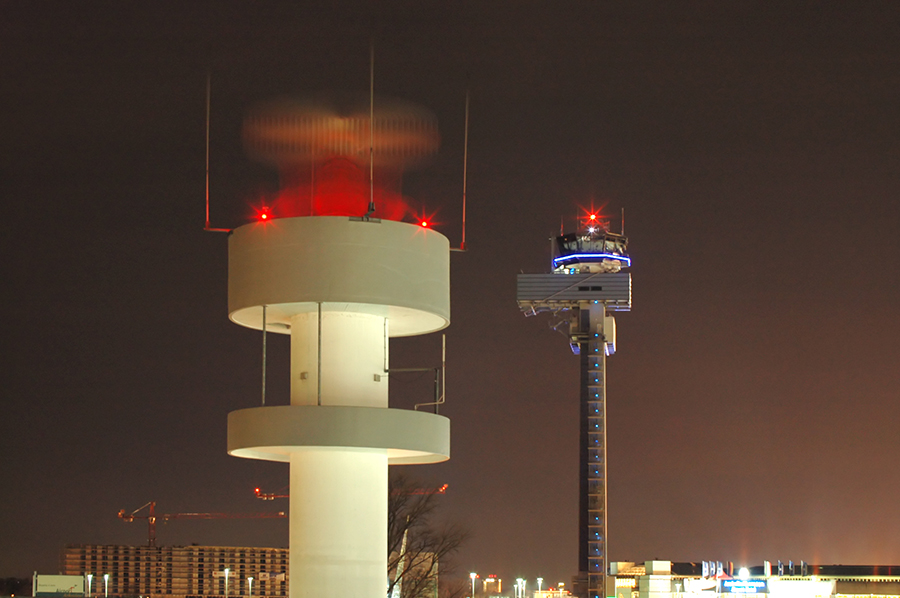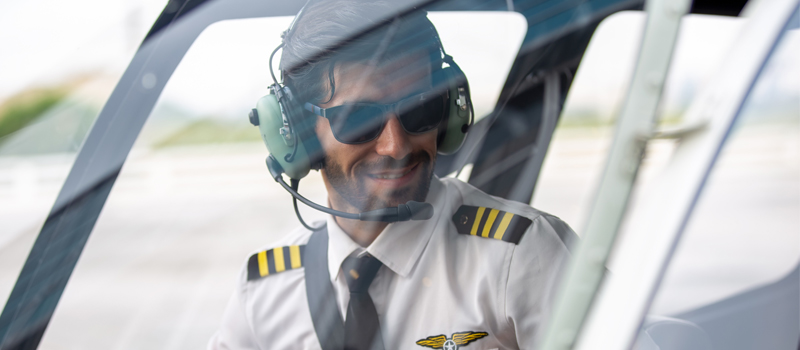-
Planning a Cross Country Flight - 12 Great Tips for Success
- 1) Get the Weather!
- 2) Plan Using Prominent Fixes
- 3) Check Your Distances
- 4) Minimum Safe Altitude
- 5) Apply the Correct Variation
- 6) Be Selective in Your Cruising Altitude
- 7) Work Out Timings
- 8) Calculate Fuel Burn
- 9) Check the NOTAMS
- 10) Map Lines
- 11) Draw Drift Lines
- 12) Draw Heading, Time, and MSA on Each Leg
-
Cross Country Flight Plan - Template and Example Guide
- Cross Country Flight Plan Template
- Example Cross Country Flight Plan
- 1) Waypoint From-To
- 2) True Course
- 3) Magnetic Course
- 4) Heading To Fly
- 5) Altitude to Fly
- 6) Distance
- 7) MSA
- 8) Time on Leg
- 9) ETA
- 10) Planned Fuel on Board
- 11) Fuel Burn
-
Can You Fly VFR Cross Country?
-
Final Thoughts
Making a cross-country flight plan sounds quite technical, but it is really easy. As a pilot, your flight plan is your ‘to-do list’ and your only means of checking your route is going as it should. Today we discuss how to make a cross-country flight plan and even give you a template (with instructions) that you can use when planning your next flight. Here’s the deal…
Planning a Cross Country Flight – 12 Great Tips for Success
When filling in your cross-country flight plan, there is plenty to think about. The more you plan, the easier your flight will go. Proper preparation is the key to success. A successfully filled-out flight plan aims to have all the necessary information in one place.
How do you achieve this?
Easy.
Check out our top tips below.
1) Get the Weather!
If you are planning a cross-country trip for the first time, you will most definitely want to maintain VFR (visual flight rules). To achieve this, you will want to ensure that the weather is clear all the way along your route.
Study both the actual weather and the forecasts to see if there is anything that might trip you up along the way.
We have a great guide here on how to read a METAR.
Oh, and remember. While you’ll definitely want to check the weather at your point of departure and destination, it is really good airmanship to look at a few ‘diversion’ options along the way. You never know when you might need to go elsewhere.
2) Plan Using Prominent Fixes
When airborne, things look much different (and smaller) than you might expect.
That’s the beauty of flying, right?
It makes sense to use visual navigational fixes that are easily visible from the air. Here’s a list of features we commonly look for that are really easy to identify: –
- Distinctive bends in roads or rivers
- Intersections of two features, such as a river, road, or railway line.
- Unusually shaped lakes
- Large, elevated landmarks
- Prominent headlands
- Airfields
3) Check Your Distances
To qualify for a ‘cross-country’ flight, you must satisfy a few minimum requirements. Otherwise, you won’t be able to log it as cross-country.
For private pilots, 14 CFR 61.1 states that “cross country” is: –
and…
- “includes a landing at a point other than the point of departure.”
Note that it’s 50 miles, in a straight line, from where you departed, including a landing. If you flew 200 miles and then landed back at the point of departure or within 50 miles, that doesn’t count!
4) Minimum Safe Altitude
While you will want to maintain visual contact with the ground at all times, occasionally, you might find the weather takes an unexpected turn for the worse.
And this next point is important.
You must ensure that you are clear of terrain.
What is the best way to do this?
Write down a minimum safe altitude on your flight plan for each leg.
How do you calculate minimum safe altitude (MSA)?
Easy. Once you have drawn the lines on your map, place the center of your planning ruler on the line. Typically the rulers offer 5 nautical miles of clearance on either side. Note all the map’s high points (normally ‘spot heights’). Add 500 feet, and that is your minimum safe altitude.
You’ll know that whether you are visual with terrain or not, you are clear in all circumstances.
5) Apply the Correct Variation
This is a mistake that many pilots have made, but we’ll tell you now so you can avoid it.
Be sure to apply the correct variation to the tracks drawn on your map. The lines you see reference true north, but you’ll be flying magnetic. Here’s a quick guide detailing the difference between the two!
6) Be Selective in Your Cruising Altitude
There are rules about what altitude you should fly depending on your course. Here’s what you need to know.
For heading 0 – 179 degrees = Choose an ODDaltitude +500 feet
For heading 180 – 359 degrees = Choose an EVEN altitude +500 feet
Want an easy way to remember it? Here’s something we use: –
“While the East is pretty ODD, the West is EVEN better.”
By using the above altitudes, you are reducing the chances of meeting someone at your level mid-air.
7) Work Out Timings
Once your tracks are laid down, you can determine how long you’ll need to fly on each leg.
While your true airspeed is what your instruments will read, your ground speed will affect the time you are on each leg.
Want a top tip?
Draw a big fat wind arrow on your chart. This works as a great gross error check when you are airborne and prevents you from making any mistakes during the planning phase.
8) Calculate Fuel Burn
We’ve saved one of the most important tips until last.
Once you know how long you are flying, you’ll be able to calculate how much fuel you should use on each leg.
And let us tell you this…
The best pilots always keep an eye on how much fuel they have.
But wait, I’m going to take off with full tanks. What’s the problem?
By monitoring your fuel, you’ll always have a good idea of how much endurance you have. Extra fuel is “money in the bank”. Also, by keeping an accurate fuel check, you’ll be able to identify early on if you happen to spring a leak.
(It occasionally does happen, check out this video to watch it in action): –
9) Check the NOTAMS
Weather isn’t the only thing you must consider when creating a cross-country flight plan.
Are you sure that everything is up and running at your destination airport?
Landing and finding out that there is no avgas is a mistake you’ll only make once.
The short answer? Check the NOTAMS and be a good pilot!
10) Map Lines
You’ll see solutions and fancy pens for drawing precision lines on maps.
Want our advice?
A nice, fat, easy-to-spot sharpie line works wonders when you are in the air. Being VFR, you’ll want to have your eyes 99% outside the aircraft. Make your lines really stand out so you can focus on what matters.
As a bonus tip, we’d suggest leaving the area around each fix line-free. That way, you can easily identify ground features.
11) Draw Drift Lines
Drift lines are an absolute game changer when plotting a cross-country flight plan.
Ever heard of the “one in sixty” rule?
It works like this.
If you draw a line that deviates from your course by 1 degree after 60 miles, and if you were on that line, you’d be exactly one mile off track.
How is this helpful?
You can draw a line on either side of your track from each fix that is 5 degrees different from your track.
At the halfway point on each leg, you can see how many degrees you are from your intended track, and it makes a heading correction to get to your fix really easy. Just double your track error to get back on course!
12) Draw Heading, Time, and MSA on Each Leg
This is a pro-pilot tip.
Looking at two pieces of paper is more difficult than looking at one, right?
Once you have completed your cross-country flight plan, draw your course to steer, timing, and MSA in a little box next to each leg. You can easily see the information when airborne without flipping through the paper on your kneeboard.
Cross Country Flight Plan – Template and Example Guide
Want to see what a Cross Country Flight Plan looks like?
Below you’ll find a template that you can print and use for your planning and also an example that has been filled out so you can see how it works: –
Cross Country Flight Plan Template
| Waypoint | Course (T) | Course (M) | Heading to Fly | Altitude to Fly | Dist | Minimum Safe Altitude | Time on Leg | ETA T/O: | Planned Fuel Onboard | Extra Fuel |
Example Cross Country Flight Plan
Below, you’ll find a “filled out” example of a cross-country flight plan, simulating a fictitious flight from Deer Valley, Phoenix, to Prescott.
Under each heading in the flight plan, you’ll find a number and a description of what is going on and what you must do to complete your flight plan.
| Waypoint From/To (1) | Course (T) (2) | Course (M) (3) | Heading to Fly (4) | Altitude to Fly (5) | Dist (6) | Minimum Safe Altitude (7) | Time on Leg (8) | ETA (9) ——— T/O: 15:00 | Planned Fuel Onboard (10) | Est Fuel Burn (11) |
| KDTV – Sun City | 240 ° | 252 ° | 252 ° | 4500ft | 14nm | 5100ft | 6 min | 15:06 | 45 gal | 1 gal |
| Sun City – Lake Pleasant | 349 ° | 003 ° | 003 ° | 5500ft | 14nm | 5100ft | 6 min | 15:12 | 44 gal | 1 gal |
| Lake Pleasant – Powerline cross | 003 ° | 015 ° | 015 ° | 10200ft | 14nm | 10,100ft | 7 min | 15:19 | 42 gal | 2 gal |
| Powerline cross – KPRC | 313 ° | 325 ° | 325 ° | 6500ft | 35nm | 10,200ft | 16 min | 15:39 | 38 gal | 4 gal |
1) Waypoint From-To
This is the easiest part to fill out. Once you have selected your fixes, start by writing your point of departure and the next point, all in the same box.
From there, it’s a simple sequence. The next box will be the start of your next leg. As a good gross error check, ensure each waypoint’s end corresponds to the first point in the next box.
2) True Course
This is simply the measured course from the start of each waypoint, measured regarding true north (the straight grid lines on your chart)
3) Magnetic Course
Once you have the true course, converting it to a magnetic one is simple. You’ll need to know the variation in the area you are flying. In the above example, the variation is 12 degrees west. Remember the following: –
- Variation East = Magnetic Least (meaning subtract the variation)
- Variation West = Magnetic Best (meaning add the variation)
4) Heading To Fly
In the above example, the heading to fly is the same as the magnetic course. In truth, this is rare. The heading to fly is actually the magnetic course, corrected for wind.
To work out wind deviation here is a great article telling you all you need to know.
5) Altitude to Fly
Ideally, and unless there is a good reason. You will want to fly according to the semi-circular rule. We’ve described it above, but you can also see it here on the FAA Website.
6) Distance
This one is easy, just measure the distance between each pair of waypoints and write it in the box! By knowing an accurate distance, you’ll be able to determine how long you can expect to fly on each leg and whether it meets the minimum requirements for a “cross country” flight.
7) MSA
The minimum safe altitude. This altitude is the highest point within a given radius on either side of your planned track. If you are flying VFR, you should always be visual with the terrain, and you are permitted to fly below it.
However, if you inadvertently find yourself in instrument conditions, it would be an excellent idea to climb to your MSA to guarantee terrain clearance.
It is also important to note that operating in IMC is highly illegal (and dangerous) without a valid instrument rating.
8) Time on Leg
Once you know your expected ground speed, you can determine how long it will take you to fly each leg.
Be aware of where the wind is coming from. That way, if your fix doesn’t appear on time, you can make an adjustment based on whether you arrive early or late.
9) ETA
Knowing your estimated arrival time over each fix is a useful tool. It all starts as soon as your wheels leave the floor or you set your course from your first fix.
Write down the time overhead your first fix, and then you can work forward by adding the time on the leg to your departure time. This will give you a great idea of when to start looking for your fix on the ground. It also works as a quick and easy way to work out if the wind is as forecast.
10) Planned Fuel on Board
You can easily work out how much fuel you should have at any point along your cross-country route, provided you know how much you started with. Write the contents of your tanks in the first box as soon as you enter the cockpit. Use this in conjunction with the next box to calculate whether your flight plan will plan, fuel-wise.
11) Fuel Burn
Fuel burns will vary from aircraft to aircraft. You may also work in gallons or pounds. You can find a typical cruise burn in your airplane flight manual. Simply subtract the estimated fuel burn from the adjacent box (planned fuel on board). Write the answer in the next box below.
Can You Fly VFR Cross Country?
You can fly cross-country using visual flight rules. In fact, according to 14 CFR 61.109, you must do so to gain your private pilot’s license. This will all be achieved using visual flight rules, navigating using ground features, accurate flying, and timing.
There are a lot of cross-country requirements listed, so it is a good idea to practice. You’ll need to fly the following VFR to be awarded a private pilot’s license.: –
- One cross-country flight of over 100 nautical miles
- 5 hours of solo cross-country time
- One solo cross-country flight of 150 nautical miles total distance, with three full stop landings, and a distance of at least 50 nautical miles between the takeoff and landing points.
Final Thoughts
When we think about it, cross-country flight planning is simply a case of ‘filling in the boxes’ and then flying what is in those boxes accurately. Each section of your flight plan is vitally important, and it pays to take your time in the planning stage.
till at the ‘planning stage’ of your aviation adventure? Don’t worry. We’ve got you. Check out our free guide to becoming a pilot.



